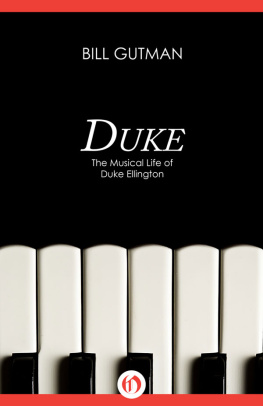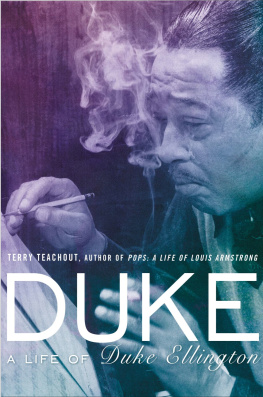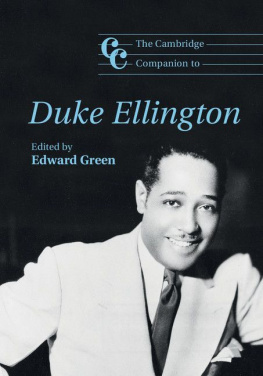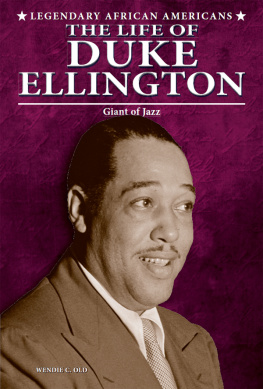
Library of Congress Cataloging-in-Publication Data
Stein Crease, Stephanie.
Duke Ellington : his life in jazz with 21 activities / Stephanie Stein Crease. 1st ed.
p. cm.
Includes bibliographical references, discography, filmography, and index.
ISBN 978-1-55652-724-1
1. Ellington, Duke, 1899-1974. 2. Jazz musiciansUnited StatesBiography. I. Title.
ML410.E44S75 2009
781.65092dc22
[B]
2008023742
Cover and interior design: Monica Baziuk
Interior illustrations: Laura DArgo
Cover images: Institute of Jazz Studies
2009 by Stephanie Stein Crease
All rights reserved
First edition
Published by Chicago Review Press, Incorporated
814 North Franklin Street
Chicago, Illinois 60610
ISBN 978-1-55652-724-1
Printed in the United States of America
5 4 3 2 1

To my dear family and all in our world who go beyond category and hear the sounds of surprise.

CONTENTS


NOTE TO READERS
D URING D UKE E LLINGTONS first years as a young professional musician in Washington, D.C., and then in New York City, he was sometimes a member of other peoples bands, and also a bandleader himself. In those early years of Dukes career, his band went by several names, and was also given different names by club owners and reviewers. Some of those names include: The Duke and His Serenaders,
The Serenaders, The Duke and His Kentucky Club Serenaders, The Washingtonians, Duke Ellington and His Cotton Club Orchestra, and Duke Ellington and His Famous Orchestra. The band also occasionally used pseudonyms to get around recording contracts. Dont let all the changing names confuse you. From the early 1930s on, the band was almost always known as Duke Ellington and His Orchestra.
ACKNOWLEDGMENTS
M Y SINCERE GRATITUDE goes to my editor and publisher, Cynthia Sherry, whose insight and creativity helped shape this book. Also, very special thanks to my agent, Susan Ramer, developmental editor Lisa Reardon, designer Monica Baziuk, and the production staff at Chicago Review Press for helping see this project through to completion. I would like to especially thank Karen Oberlin Hajdu and Robert Crease for their encouraging comments as the manuscript progressed. I would also like to specially acknowledge James Herschorn, archivist at the Institute of Jazz Studies, Rutgers University, for his assistance with compiling most of the photos and artwork for this book. For additional photos and memorabilia, very special thanks to: David Hajdu; Morris Hodara, Corresponding Secretary of the Duke Ellington Society (TDES); and Che Williams, photo archivist, SONY/BMG.
Lastly, I would like to thank my son, Alexander Crease, whose joyful activities are an inspiration, as are those of India Schneider-Crease, my husband, Robert P. Crease, and my jazzy dog, Kendall.
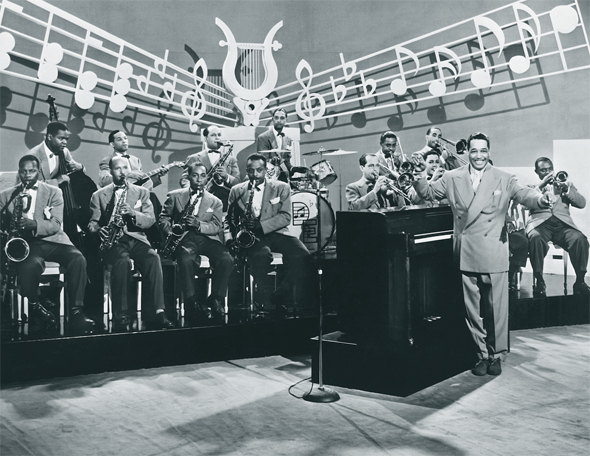
INTRODUCTION
E XPLORING D UKE E LLINGTONS life (18991974) offers us a many-paned window to view the person, the artist, and his times and culture. Ellingtons long career ran along its own track through a changing country and a changing world. His vast musical accomplishments include composing over 2,000 works, developing a unique style as a pianist, and maintaining one of the worlds greatest jazz orchestras for over 50 years. His compositions molded a rich musical narrative from the sounds, colors, and textures of African American life: sometimes they took the form of pop songs, sometimes long orchestral works. Although his music always fell under the banner of jazz, Duke Ellington resisted musical categorizations of any kind. He once used the words beyond category as the highest compliment he could pay to another musician, and those words apply to him and his work, too. He was always reaching for something new and different in music.
Today, Duke Ellingtons music keeps being discovered by people of all ages, everywhere. There are courses in music schools and conservatories devoted to his compositions, and annual international conferences about his music. His arrangements are studied and played by hundreds of high school jazz bands. You can hear his songs performed by young musicianson piano, on violin, on trumpet, on saxophonefrom grade school on up. Dukes music gives us inspiration to be creative on our own terms, in whatever we pursue. Whether its a song like It Dont Mean a Thing (If It Aint Got That Swing) or one of his Sacred Concerts, Dukes music is the work of an American master, telling an American musical story that touches people the world around.
TIME LINE

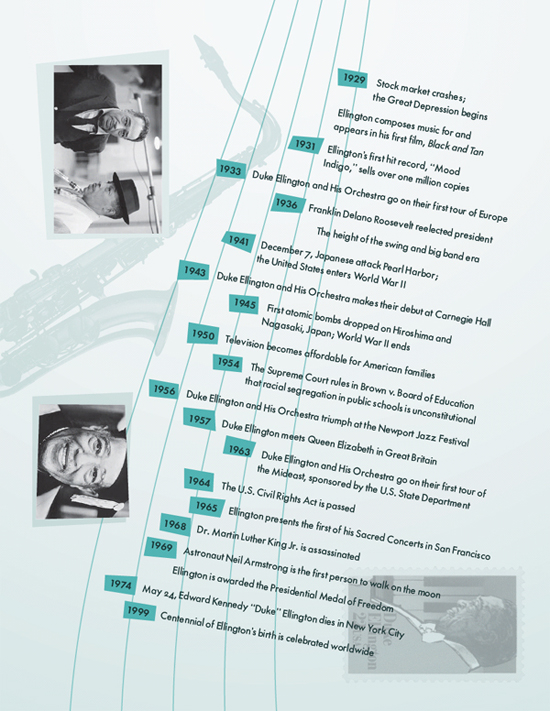
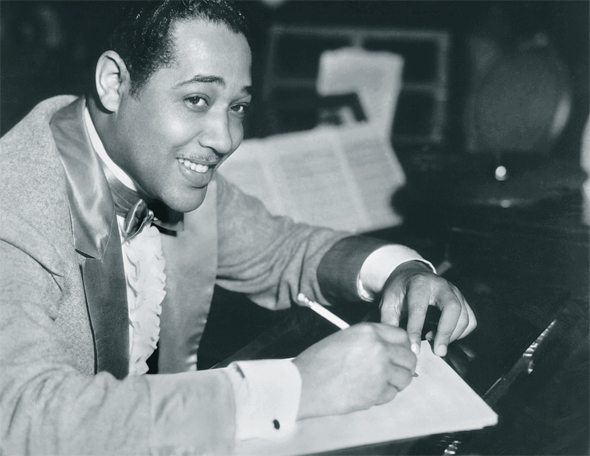
1
CATCHING A TUNE
There have been so many extraordinary and inexplicable circumstances in my life. I have always seemed to encounter the right people, the right place at the right time, and doing the right thing to give me the kind of instruction and guidance I needed.
D UKE E LLINGTON
D o you know anyone whose skill or talent suddenly took you by surprise? Like your best friend from elementary school. He was funny and liked to have a good time, but he never got terrific grades or stood out at sports or anything. And the next thing you knew, there he was at 15, playing the piano and being a big hit at parties, and even making some money at it. And to top it off, he was a really good piano player!

Publicity photo of Duke Ellington, then a young bandleader and pianist. Courtesy David Hajdu
Well, that was true of Edward Kennedy Duke Ellington, who did not show much interest or talent in music as a child. Yet years later, he became one of the greatest jazz composers and bandleaders who ever lived.
Edward Kennedy Ellington was born April 29, 1899, in Washington, D.C. He was the second child of James Edward and Daisy Ellington. Edwards younger sister, Ruth, wasnt born until he was 16, so he was mostly raised as an only child (the Ellingtons first child died as a baby). He was never at a loss for playmates, though. Young Edward had a large extended family of cousins to play with, and aunts and uncles who visited constantly. They lived in a tight-knit middle class African American community in the northwest section of Washington, D.C., known as the Uptown District. Ellington often said how lucky he was to grow up there and to be raised by parents whose complete confidence in him helped him on his road to success.

Next page






